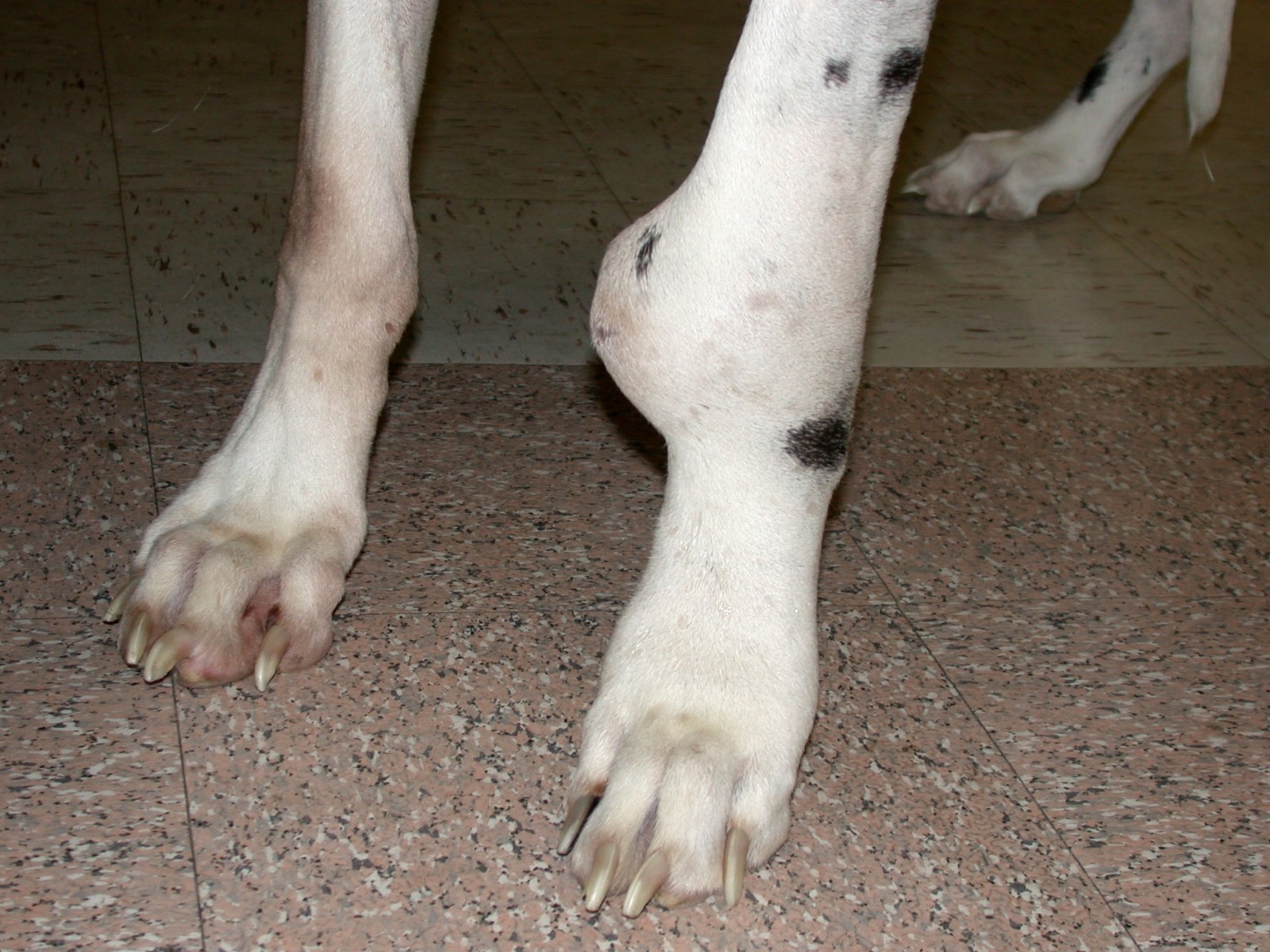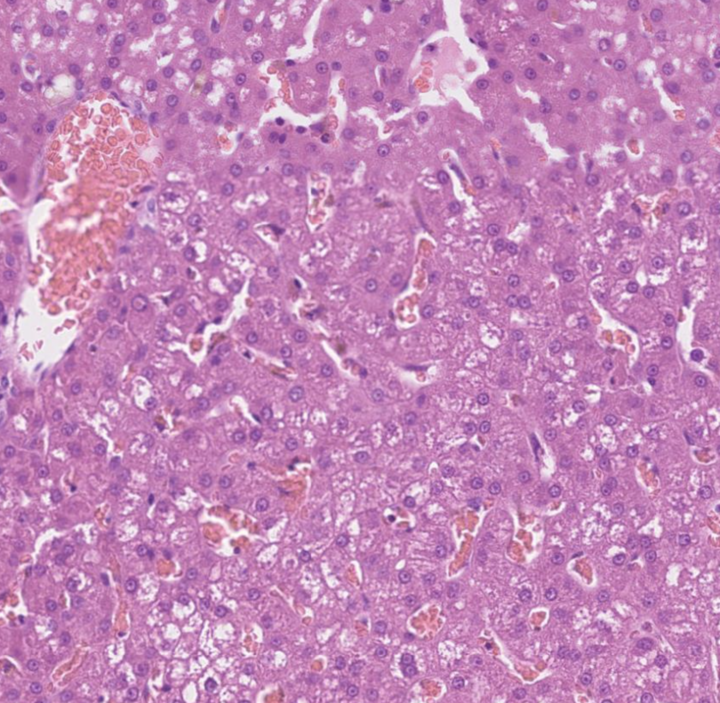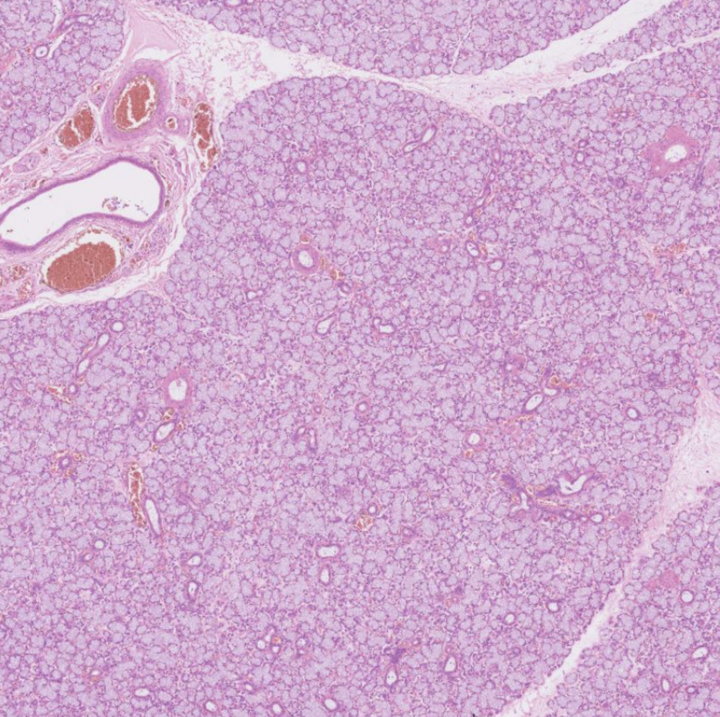Bone Cancer and Treatment options
What is bone cancer?
Bone cancer is a common cancer in dogs, particularly in large breeds. Approximately 85% of canine bone tumours are osteosarcomas which are highly aggressive tumours, characterized by painful bone destruction where the cancer grows.
Osteosarcoma commonly affects the limbs of dogs but can occur in other parts of the body (skull, ribs, vertebrae, pelvis). The condition can occur in small breeds but is must less common. In approximately 80% of dogs, the cancer will spread to the lungs. The behaviour, prognosis, and treatment depends on tumour type, primary location, and extent of disease spread. Various diagnostic tests such as X-rays, blood tests, and sometimes biopsy are required to determine the most appropriate treatment.
What are clinical signs?
The clinical signs can be non specific. This includes swelling (soft or hard) that increases over time at the location of the tumour. These tumours are typically painful. Pets will typically have some degree of lameness, varying from intermittently to non weight bearing. As the disease progresses, the pet may exhibit non specific signs such as irritability, aggression, weight loss, loss of appetite, restlessness or reluctance to exercise. Some dogs may present with fractures due to weakening of bone.
Diagnosis and Staging
Initial evaluation involves a complete physical examination, blood tests, x-rays (at the affected site and lungs), a bone scan to look for other areas of bone involvement, and sometimes a fine needle aspirate or bone biopsy. A CT scan may be suggested to evaluate the entire body for presence of spread.
Definitive surgery, such as amputation in the case of limb tumour, may be performed without a prior biopsy if the age, breed, location and appearance of tumour are all very suggestive of osteosarcoma.
Staging and thorough work up is essential to define the extent of disease and spread prior to treatment. This is to ensure as much information regarding the pets health is attained which may assist in identifying concurrent medical, bone/joint, nerve/spinal issues which may influence treatment recommendations.

Treatment
Each case is treated on an individual basis. The best option in many cases may involve surgery – limb amputation and/or radiation/chemotherapy therapy. In the case of limb tumours, surgical or limb-sparing options may be possible.
- Amputation
Amputation is the single best pain relief measure for dogs with appendicular osteosarcoma. The surgery eliminates the primary tumour and will generally improve quality of life for most dogs by removing the pain source. While surgical treatment of osteosarcoma by amputation is palliative, it rarely increases survival significantly.
Most patients tolerate amputation and can even thrive once the painful tumour and limb are removed. In most situations, dogs with three limbs can do everything a 4-legged pet can do.
- Limb-sparing surgery
In dogs, limb-sparing surgery may be an option for a relatively small lesion of the distal radius (lower forelimb). This option is dependent on the specific location and size of lesion. Function is poor when tumours of the hindlimbs or proximal humerus (upper forelimb) is treated with limb-sparing techniques. This option requires intense follow-up care to help decrease the rate of complications.
- Palliative Radiation Therapy
If an animal is not considered to be a suitable for amputation or limp sparing, consideration may be given to palliation with radiation therapy. Radiation is given weekly, in a 3 week protocol, which has been reported to palliate pain for dogs with osteosarcoma. Improved limb function is reported in approximately 75%. Improvement lasted for a median of 2 months regardless of radiation protocols and toxicity is rare.
- Chemotherapy
Survival of dogs with osteosarcoma may be significantly prolonged with addition of chemotherapy. This can help slow the rate of metastasis of any bone tumour, which, unfortunately is common. Chemotherapy is unlikely to cure most dogs but can prolong a good quality of life. Most dogs tolerate chemotherapy well, but some experience mild, self-limiting side effects such as vomiting, diarrhoea, reduced appetite. A small percent will experience severe side effects that may require hospitalization.




